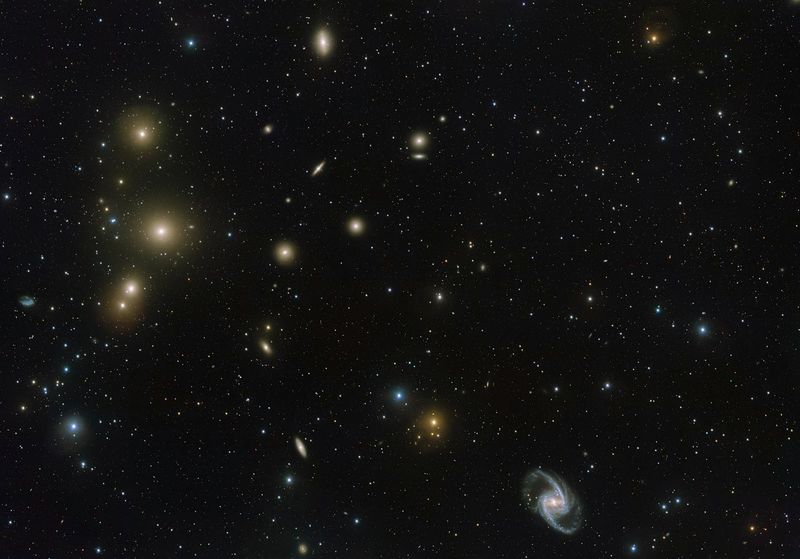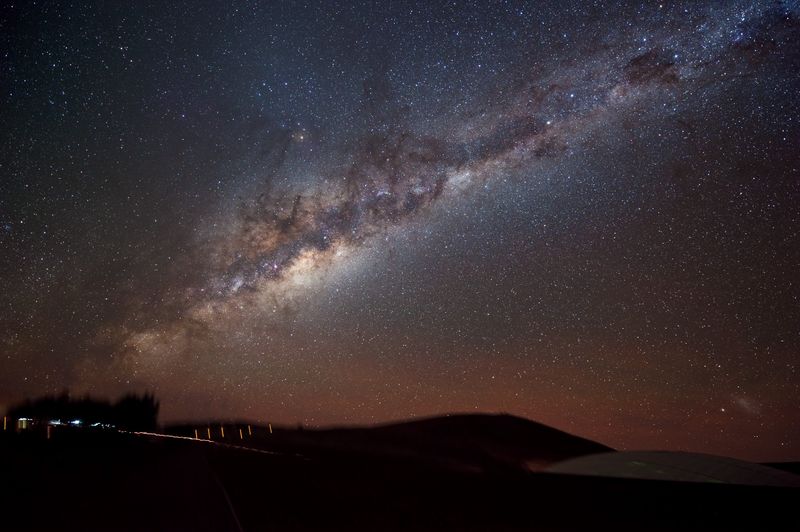According to the leading model of the universe, the cosmos is filled with five times more "dark matter" than regular matter. This hypothetical substance is invisible but a dark matter halo is thought to exist around galaxies due to the strong gravitational pull its mass exerts on them. However, not all astronomers agree that dark matter is the best explanation for what we are seeing out there. Now, a new study challenges our current understanding: the dwarf galaxies in the Fornax Cluster don't seem to be following the rules.
The Fornax Cluster is the second closest galaxy cluster to our own. It is located 62 million light-years away and it has an estimated mass of 70 trillion suns. A fair bit of that mass is distributed in dwarf galaxies. In the Monthly Notices of the Royal Astronomical Society, the team set out to test the standard model of cosmology, also known as ΛCDM (lambda-CDM) by looking at these dwarf galaxies and found something surprising. They appeared to have undergone disturbances that would not be possible if they were indeed surrounded by a heavy dark matter halo, as theorized by the standard model.
Using observations from the Very Large Telescope, the team estimated how much dwarf galaxies are disturbed by the gravitational tidal forces that the largest galaxies in the cluster exert on them. According to the simulation, the ΛCDM scenario did not recreate the observable properties of the cluster.
“The comparison showed that, if one wants to explain the observations in the standard model the Fornax dwarfs should already be destroyed by gravity from the cluster center even when the tides it raises on a dwarf are sixty-four times weaker than the dwarf's own self-gravity,” lead author Elena Asencio, from the University of Bonn, said in a statement.
But the team tested the alternative theory, Modified Newtonian dynamics (MOND), also known as Milgromian dynamics after physicist Mordehai Milgrom, who first proposed it. In the simulation, MOND fared much better than ΛCDM.
"We were not sure that the dwarf galaxies would be able to survive the extreme environment of a galaxy cluster in MOND, due to the absence of protective dark matter halos in this model, but our results show a remarkable agreement between observations and the MOND expectations for the level of disturbance of the Fornax dwarfs," co-author Dr Indranil Banik from the University of St Andrews explained.
If the result is confirmed, it's certainly a headscratcher for the standard model of cosmology, but challenging a leading theory requires a lot of evidence, which the team is going to look for.
“Our results have major implications for fundamental physics. We expect to find more disturbed dwarfs in other clusters, a prediction which other teams should verify,” co-author Dr Hongsheng Zhao added.
While dark matter as a hypothesis is far from solid, MOND is riddled with problems that are easily explained if dark matter exists.




